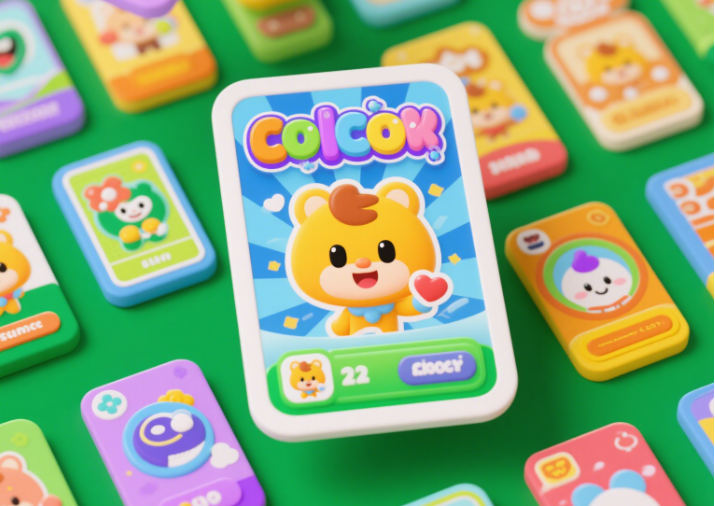In an era where digital experiences dominate daily life, digital collectibles have emerged as a revolutionary force, reshaping how we own, trade, and interact with assets. Built on blockchain technology, these unique digital assets—often referred to as non-fungible tokens (NFTs)—are transforming industries from art and gaming to sports and real estate. This article explores the rise of digital collectibles, their underlying technology, market dynamics, and the opportunities they present for creators, collectors, and investors.
The Evolution of Digital Collectibles
Digital collectibles are not a new concept. Early forms, such as virtual pets and in-game items, existed long before blockchain. However, blockchain technology has 赋予 these assets true scarcity and ownership. Unlike traditional digital files, which can be easily copied, digital collectibles are authenticated via cryptographic tokens, ensuring their uniqueness and provenance.
The breakthrough came in 2017 with CryptoKitties, a blockchain-based game where users could breed and trade virtual cats. This marked the first mainstream adoption of NFTs, demonstrating their potential to create scarcity in the digital realm. Since then, the market has exploded, with sales volume reaching $4.1 billion in Q1 2024 , despite a 45% decline in Q2 due to broader market volatility.
The Technology Behind Digital Collectibles
At the core of digital collectibles lies blockchain, a decentralized ledger that records transactions securely and transparently. Two key token standards dominate the space:
- ERC-721: The original NFT standard, used for unique items like art and collectibles. Each token is indivisible and has a distinct identifier.
- ERC-1155: A multi-token standard that supports both fungible and non-fungible assets, enabling batch transfers and reducing transaction costs. This makes it ideal for gaming and multi-asset projects .
Layer 2 solutions, such as Arbitrum and Optimism, are further enhancing scalability by processing transactions off-chain, lowering gas fees, and improving speed . These innovations are critical for mainstream adoption, as they address Ethereum’s scalability challenges.
Applications Across Industries
Digital collectibles are no longer confined to niche markets. Here’s how they’re disrupting industries:
- Art and Creativity: Platforms like SuperRare and Foundation allow artists to mint and sell digital art directly to collectors, bypassing traditional galleries. Beeple’s $69 million NFT sale in 2021 remains a landmark moment .
- Gaming: Games like Axie Infinity and Decentraland use NFTs for in-game assets, allowing players to earn cryptocurrency by trading items. The Immutable X platform, built for NFT gaming, processes 9,000 transactions per second with zero gas fees .
- Sports and Entertainment: Athletes and teams are minting digital trading cards and exclusive experiences. For example, NBA Top Shot has generated over $1 billion in sales, offering fans ownership of iconic basketball moments .
- Real Estate: Virtual land in metaverse platforms like Decentraland and The Sandbox is being sold for millions, with investors developing virtual businesses and event spaces .

Market Trends and Growth
The digital collectibles market is projected to grow at a 20.1% CAGR from 2024 to 2033, reaching $48.64 billion . Key trends driving this growth include:
- Interoperability: Cross-chain solutions like Polygon and Avalanche enable NFTs to move seamlessly between blockchains, expanding their utility .
- Bitcoin NFTs: The Ordinals protocol has sparked a surge in Bitcoin-based NFTs, leveraging the network’s security and scarcity .
- AI and AR Integration: AI-generated art and AR experiences are enhancing the value of digital collectibles, offering interactive and dynamic content .
However, challenges persist, including regulatory uncertainty, high gas fees, and environmental concerns. Projects like Immutable X and ZkSync are addressing these issues through eco-friendly designs and Layer 2 scaling .
Why Digital Collectibles Matter
Digital collectibles represent more than just speculative assets. They empower creators by enabling direct monetization and royalties on secondary sales. Collectors gain ownership of unique digital assets with verifiable scarcity, while investors benefit from new revenue streams.
For businesses, digital collectibles offer innovative marketing tools. Brands like Gucci and Nike have launched digital fashion lines, engaging customers in virtual worlds . Meanwhile, decentralized finance (DeFi) platforms are integrating NFTs for collateralization and yield farming, further blurring the lines between traditional and digital economies.
The Future of Digital Collectibles
As technology evolves, digital collectibles will become increasingly intertwined with everyday life. Hybrid NFTs—combining physical and digital assets—are already gaining traction, offering collectors tangible benefits like exclusive merchandise or event access . Additionally, advancements in AI and AR will enable personalized, immersive experiences, transforming how we interact with digital assets.
For those looking to stay ahead, platforms like Bitora provide real-time insights into the digital collectibles market, tracking trends, project performance, and transaction data. By leveraging these tools, investors and creators can navigate the market with confidence, capitalizing on emerging opportunities.
Conclusion
Digital collectibles are not a passing fad but a fundamental shift in how we perceive ownership. From art and gaming to real estate and finance, their impact is profound and far-reaching. As the market matures, the integration of blockchain, Layer 2 solutions, and cutting-edge technologies will unlock new possibilities, making digital collectibles an essential part of the web3 ecosystem.
Stay ahead in the digital collectibles market with Bitora’s comprehensive insights and real-time data. Visit Bitora to explore the future of digital assets today.









Leave A Reply